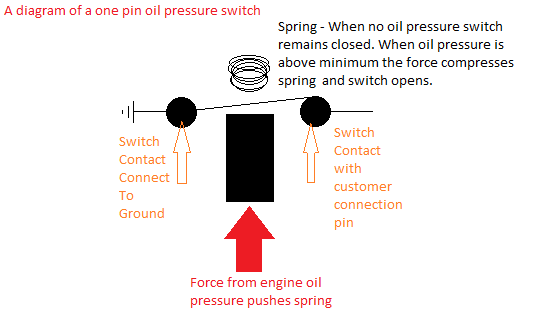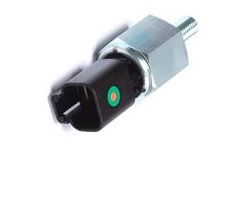How can you test an oil pressure switch?
How can you test an oil pressure switch?
Testing an oil pressure switch depends on which type of switch you have. Firstly, make sure your engine is locked out. We suggest disconnecting the battery. Secondly identify which type of switch you have. If you don't know or can't work it out, ask your manufacturer. You might have an oil pressure sender and not a switch, or another oil pressure sensor or generator protection device. If you don't know already, have a look at what is an oil pressure switch and what is an oil pressure sensor.
In each case you may want to run the engine to determine if the switch is changing state. Before you do this you should try and prove that the engine doesn't have an oil pressure fault, by fitting another switch that works, for example, or reading the engine oil pressure from a secondary device, such as an oil pressure sender, which may give a readout on your generator control module. You could try the switch on an engine you know has oil pressure. You should not in any circumstances run an engine where you are not 100% confident that the oil pressure is at the correct level, this may seriously damage the engine by causing catastrophic failure and may lead to injury or death.
In order to test the switch, use a multimeter. Set the multimeter to measure resistance, or if it has the feature to test if there is a closed circuit.
In order to test the switch you should remove the cables that connect it to the generator control system, if you leave it connected you may get strange and unexpected readings.
So we are going to assume that your oil pressure switch works as per all three examples above and is normally closed (which is when the engine is not running as well, because the oil pressure is 0) and opens when the engine runs, showing oil pressure.
1 Pin Switch
As mentioned above a single pin oil pressure switch has two connections - one on the pin and the other through the body to the engine block. This connection through the body of the switch to the engine block acts as an earth connection. In order to test the switch you can connect your multimeter between the pin and the senders body. You should find the switch is closed while the engine is at rest. When the engine is running, the switch should open.
As you can see this switch has only one pin, so the switch works between ground and the pin.

2 Pin Switch
A two pin oil pressure switch has two connections. These can vary - there are two options.
2 Pin Switch, With One Pin as Ground (Most Common)
One on the pin and the other through the body to the engine block. This connection through the body of the switch to the engine block acts as an earth connection. The pin then changes state. Normally the circuit is closed when the oil pressure is low. The below is an oil pressure switch found on most Perkins 400 series engines. This switch has a plastic socket that takes a 2 pin plug for the connections.

This switch works between the two pins, it doesn't use its body as the ground connection. Its a Perkins part, number T421762.
Testing this switch is as easy as the single pin switch - in this case simply connect your multimeter between the two pins. When the engine is at rest, the circuit should be closed. When the engine runs, this circuit should open.
2 Pin Switch, With One Pin Normally Open and One Pin Normally Closed
In this configuration, the each pin is switched. One will be closed when the oil pressure is low, the other open. When the oil pressure rise each will change state.
3 Pin Switch
A 3 pin switch normally has two pins that switch state, one that is normally open, one that is normally closed and a common connection, usually used for ground. Here is the most common oil switch on the Perkins 4000 series engines. It is part number 782/175. This is a 3 pin switch, it has a triangular socket which takes a 3 pin electrical plug. One pin is ground, one is normally closed and the other normally open.

To test this switch is a little more difficult - you need to find which pin is ground, which pin is normally open and which pin is normally closed. If you aren't sure, ask your supplier.
Testing this switch is easy when you have confirmed which pins are which, simply connect your multimeter between the common pin and the normally closed pin. When the engine is at rest, the circuit should be closed. When the engine runs, this circuit should open.
Once tested if you think the oil pressure sender is OK - see what else could cause low oil pressure.
